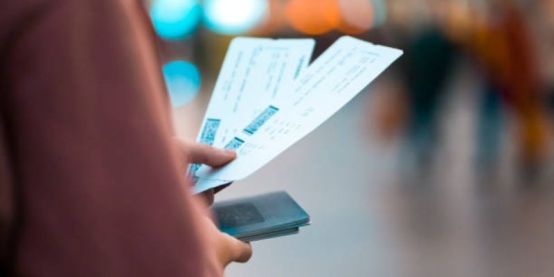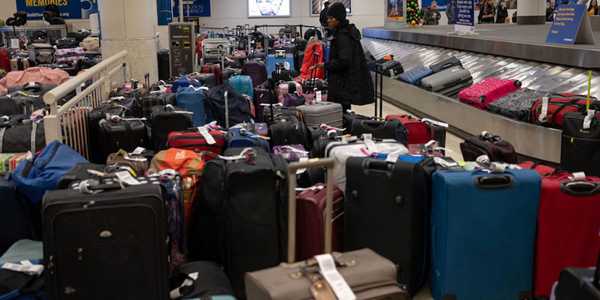How to Find Cheap Flights: Secrets from Travel Experts
Most people think cheap flights are all about luck. In reality, travel experts rely on data, timing, and a few smart tools to beat airline pricing systems. Airlines use dynamic pricing that changes every few hours. That’s why one person might pay double for the same seat.
The experts understand all these patterns—and use them to save hundreds every trip. Here’s how to find cheap flights just like the pros.
Why Flight Prices Fluctuate So Much
Airlines don’t pick random numbers when setting prices. They use a system called yield management, adjusting fares based on demand, timing, and even your browsing habits.

How Airlines Use Dynamic Pricing Systems
Airlines monitor real-time search data. When more people look at a route, prices rise. When demand drops, prices fall again. It’s the same logic used by ride-share apps during peak hours.
Factors That Influence Fare Changes
Holidays, weekends, and school breaks cause spikes in demand. Prices also depend on the route—busy hubs like New York or Los Angeles see more variation because airlines compete aggressively there.
Why Understanding These Patterns Matters
Travel experts track fare changes across days and months. They know when to wait and when to grab a deal, using data instead of guesswork.
When to Book Flights for the Lowest Price
Knowing when to book can make the difference between a fair price and a steal.
Domestic vs. International Booking Windows
Experts usually book domestic flights 1–3 months ahead. For international routes, 3–6 months gives the best value. Booking too early or too late often costs more.
The Cheapest Days and Times to Fly
Tuesdays and Wednesdays are often the least expensive travel days. Red-eye flights or early mornings are also cheaper because they’re less convenient.
How Experts Track Fare Drops Over Time
Price-tracking tools like Google Flights and Skyscanner let you set alerts and monitor trends. Professionals watch these notifications closely before buying.
Expert Tools and Websites for Finding Cheap Flights
Every travel pro has a list of trusted search tools—and each one has its strengths.
Flight Comparison Engines Experts Actually Use
Google Flights: Best for visualising prices across a month.
Momondo: Great for uncovering smaller, budget airlines.
Kayak: Known for flexible date searches and alerts.
Using several engines ensures you don’t miss hidden fares.
How to Use Price Alerts and Map Search Functions
Most of these tools let you set alerts for routes or explore entire maps for the cheapest destinations. It’s how experts plan trips around deals, not dates.
Hidden-City and Multi-City Booking Tricks
A “hidden-city” booking means buying a longer route with a layover at your actual destination because it’s cheaper. Multi-city bookings let you link different airlines or cities for big savings—but use them carefully, as airlines may cancel return legs if you skip segments.
How to Outsmart Airline Pricing Tactics
Airlines use cookies and algorithms to personalize prices. Experts counter this with a few easy tricks.
Using Incognito Mode and Avoiding Cookies
Searching in private mode prevents websites from tracking repeated searches. If airlines see you checking the same route, they may bump prices slightly.

Clearing Cache and Comparing Across Devices
Experts compare fares using different browsers or devices. A mobile search sometimes shows cheaper prices than a desktop due to regional data differences.
Why Timing and Repetition Matter
Checking prices two or three times a week gives you a clear pattern. Experts never buy after one search—they wait for the lowest trend within their booking window.
Leverage Flexibility Like a Travel Expert
Being flexible doesn’t mean being careless—it means being strategic.
Flexible Destinations: “Follow the Deal, Not the Dream”
Experts often let price guide the destination. Instead of choosing Paris in July, they might visit Madrid or Lisbon for half the cost and similar weather.
Flexible Dates: Using Fare Calendars
Tools like Google Flights’ calendar view show which days are 40–60% cheaper. One or two days’ flexibility can save hundreds.
How to Use Nearby Airports to Save Money
Flying into Oakland instead of San Francisco or Fort Lauderdale instead of Miami can lower costs. Experts check every nearby airport within a 100-mile range.
Travel Expert Tricks That Most People Don’t Know
Here’s where experience really pays off.
Combining Budget and Full-Service Airlines
Experts mix airlines—like a low-cost carrier for the first leg and a full-service airline for the next. These hybrid routes often beat standard round-trip fares.
Using Local Airline Websites and Currencies
Some fares are cheaper when booked in the airline’s home currency. Experts switch regions in their browser to unlock local pricing.
Booking One-Way Segments Separately
Round-trip isn’t always cheaper. Booking two one-way tickets with different airlines can cut costs on both legs.
Hidden Savings with Airline Error Fares
Occasionally, airlines or booking systems make pricing mistakes. Sites like Momondo sometimes display these error fares for a short time. Experts act fast—but always confirm ticket validity before finalizing.
Maximize Rewards and Points for Even Cheaper Flights
Not all savings come from price drops—some come from points.
Joining Free Frequent Flyer Programs Early
Most airlines offer free membership. Even one or two trips a year can earn miles for discounts or seat upgrades later.
How to Earn and Redeem Miles Smartly
Experts often credit miles from partner airlines into one account. This speeds up redemption and keeps points from expiring.
Best Credit Card or Travel Reward Integrations
Many travellers pair credit cards with airline programs to double earnings. Points can cover taxes or even full flights when used wisely.

Safest Ways to Book Cheap Flights Without Getting Scammed
Deals that look too good often are. Experts stay cautious when booking through third-party sites.
How to Identify Legitimate Fare Sites
Only book through HTTPS-secured, IATA-approved agencies or official airline sites. Check customer reviews and refund policies before entering payment details.
Why Not All Third-Party Sites Are Equal
Some online travel agencies delay bookings or hide fees. Reliable platforms clearly display taxes and allow 24-hour cancellations.
Refunds, Cancellations, and Hidden Fees
Experts always choose tickets with free 24-hour cancellation and review baggage fees in advance to avoid costly surprises.
How Travel Experts Find Cheap Flights Consistently
Finding cheap flights isn’t about luck—it’s about method. Experts combine smart timing, flexible planning, and trusted tools to beat airlines at their own game. Once you understand the pricing logic, use alerts wisely, and stay flexible with routes, saving on airfare becomes predictable.
These expert-backed habits can help you travel farther and more often—without overspending. Learning how to find cheap flights gives you the freedom to explore the world on your own budget.
Sources
- Learned practical methods
- Solved my questions
- Inspired new ideas











